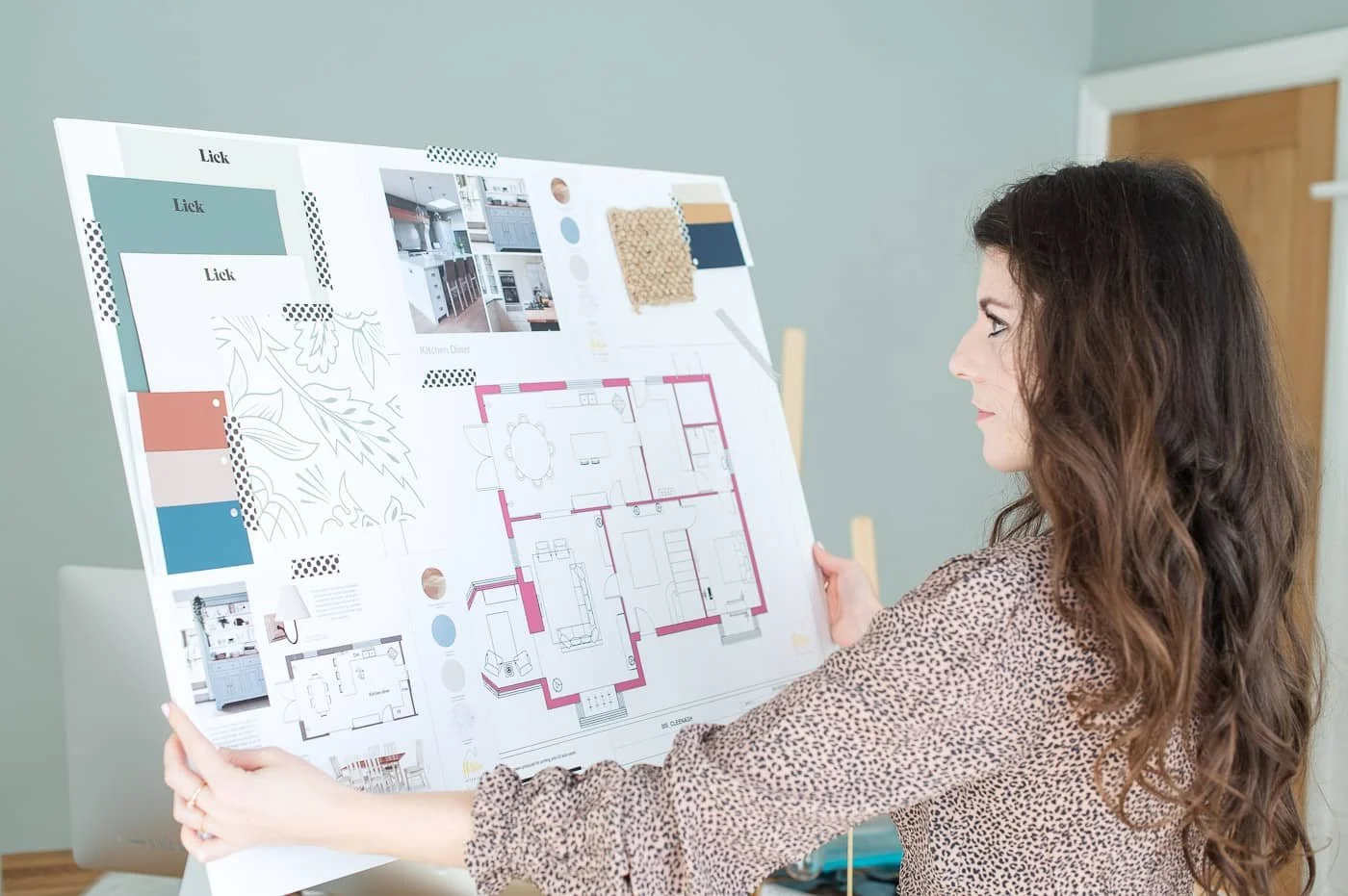How to create an interior design mood board - step by step
Whether you’re a home renovator or not, creating an interior mood board can be so much fun and so valuable in figuring out your style and direction. There are so many different ways to make them and it can be a bit of a mission figuring out where to start and how to do it properly (so you’ve got inspiration you can actually work with, so we wanted to lay out the steps for you.
From figuring out how works best for you (digitally, physically and how to work with each platform) down to key tips to make sure you nail the key elements for your own project, we’ve popped together this clear guide to each step so you can make yours an absolute success.
Let’s get creating your interior design mood board!
1. Choose your platform
Pinterest mood board sample
First things first, you need to decide where/how you want to create your moodboard.
Pinterest is always a popular option as they have a seemingly endless stream of amazing imagery and you can keep boards private if you wish.
You could also consider making an Instagram saved folder for your interior design inspo. If you’re a bit more old school or tactile, we still love the old corkboard method. Printing your images and collaging them to your hearts content is deeply satisfying and wonderfully immersive.
If you want something you can collage digitally, Canva is free and has some great templates to start with as well as cropping tools and a function to lay images over one another.
If you’re at the stage of physical samples, creating a flat lay (on a board or in a shallow tray) from material swatches, paint cards and perhaps some objects you love the shape or texture of is a great way to bring it all to life.
2. Have a think about your style
If you’re new to the world of interior design, you might not even be aware of your specific style. Plus, it can be really hard to see past trends and media influence. Think about things you’ve seen in the past that you like. Maybe it’s a style era, a holiday destination, colours that speak to you or perhaps something of sentimental importance. This will provide the basis for your search while you start to hone in on exactly what you want.
3. Remember what you’re mood board-ing for
Our client’s blank canvas!
It’s lovely just having a big scroll and saving whatever catches your eye (probably our favourite way to spend a couple of hours of boredom) but if you’re creating your new interior design mood board, try to be fairly specific on what it’s for. Is it a total home reno? One particular room? A colour scheme?
Something as small as styling a coffee table? Maybe you just do it for fun because it’s so aesthetically pleasing at the end. We’ve all been guilty of saving a hundred and one images and realising very few are relevant to what you started the search for and that can be great to deepen an understanding of what you want, just try to keep your overall aim in mind.
4. Search and search some more
This might seem like an obvious step but we have something more to add here. We totally get that most of you are probably pretty short on time, but try not to rush your image searching and close in on smaller details not just room ideas. Have you seen a rug or lamp you like? Add it in. See how it all looks together on paper. Your interior mood board image search is one of the best ways possible to flesh out a deeper understanding of your style and what you really want. Think of it as market research.
5. Take advantage of linked result features
If you’re feeling a bit stuck for interesting search terms, many platforms have features which do the work for you. Pinterest is fantastic at suggesting images you might like and even boards you might want to follow.
Instagram’s ‘Discover’ page feeds a stream of content in line with your search and save habits and also now includes related search tabs to further your ideas.
If you’re doing a good old fashioned Google search, the search engine will suggest tabs to add to your search term for relevant imagery.
6. Shuffle your images into something cohesive
As a general rule of thumb for planning a specific room or style board, you’re going to want to gather full styled images, paint shade inspiration, fabric ideas and some furniture cutouts (like an armchair you’ve been lusting after).
Once you’ve gathered enough to work with, it’s time to get to work. Whatever your chosen platform or format, try to channel your inner stylist and arrange your images or pieces into something that makes sense and also inspires you.
This might mean all the paint shades in one corner, cutouts on top of styled room images and plenty of space to let everything be seen. Again, the more you play around, the more you’re developing your style and something beautiful to dictate your project.
An interior mood board is just the first step in your design journey.
We can help you with the rest!
Our FREE email guide walks you through the essentials of nailing your own home design smoothly and with success.








